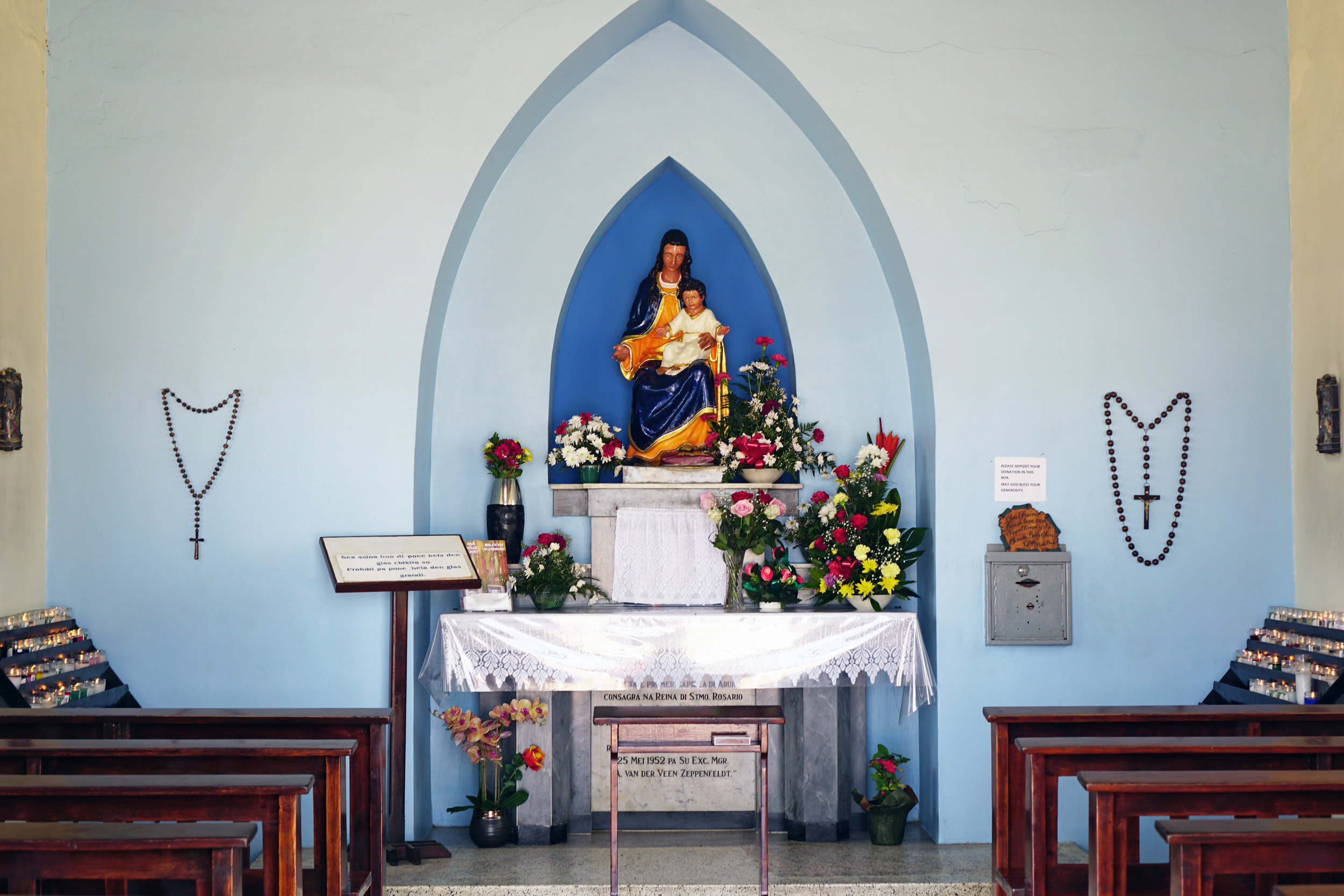Travel Diary: The Search for Aruba's Identity
I have to be honest. Aruba was a destination that never made it to the top of my travel bucket list. When I pictured myself in tropical destinations, thoughts of exotic escapes in the French Caribbean to places like Martinique and Guadeloupe always came to mind. Although I'd always heard that Aruba was a beautiful island, many travelers often spoke of the "happy island" being too touristy. Some said it was nothing more than a cruise ship stop. Others said it lacked culture and an identity while others said the food wasn't good. Although I had all of these things in the back of my mind, I was still open to check it out when friends invited my husband and I to come along with them to celebrate their anniversary. At the last minute, they had to cancel, but my husband and I decided to go anyway since we were long overdue for an island getaway. What I thought was going to be a run-of-the-mill tourist trap kind of week turned into one of our most memorable trips of the year.
Aruba is an interesting little island. Only about 20 miles long and six miles wide, it has the beauty that one would expect from an island in the Caribbean, but with it being a desert island, it had an extra charm that I loved. The culture of the people is beautifully varied. Although Dutch and Papiamento (a creole mother tongue) are the island's official languages, you will hear everything from English to Spanish. Everyone speaks of the beautiful beaches and high-rise hotels, but I had never heard anyone speak of the melting pot of indigenous people from South America, or the descendants of Africans that live on the island. I honestly had no clue that I was landing in such a multicultural society when our plane touched down. The travel books always speak of the Dutch influence, so I was pleasantly surprised when I saw so many people of color. I was intrigued and wanted to learn more about the people of this island and their beginnings. We took one day to lay out on the beach and clink champagne glasses and live the good life, but the rest of the trip was nothing less than a whirlwind adventure that gave me a different outlook on Aruba.
Instead of paying for costly tours, we rented a jeep to explore the island on our own. We left the comfort of the tourist-friendly northern region to explore lesser known areas like San Nicolaas, Aruba's second largest city located on the south end of the island. While enjoying cocktails and lunch at Charlie's Bar, a neighborhood institution this area, the bartender told us about the city's complicated history and his thoughts and concerns about the future. Once upon a time, San Nicolaas enjoyed a bustling past as home to a major oil refinery. What once was a lively city full of families, money and plentiful job opportunities became a ghost town after years of layoffs. Where thriving businesses with colorful walls stood are now faded backdrops for sex workers in the red light district. Boarded buildings and dilapidated signs are a regular sight in San Nicolaas, but the power of art and nonprofits like Aruba Art Fair are slowly turning the deserted town into an up-and-coming artist hub. One can argue that gentrification may be packing its bags and heading to San Nicolaas while others will say it's slowly getting the attention it deserves afters decades of hardship. Either way, I learned that Aruba has a history. Aruba has culture. Aruba has stories. They're just tucked away in the nooks and crannies of the island waiting to be uncovered by those willing to leave their plush resorts to listen.
I saw the not-so-pretty, but I also enjoyed the pretty. I enjoyed local fare like dutch pancakes and pastechi. We ate fried seafood that came directly from the ocean straight to our plates. We visited historic ruins. I drank fresh coconut juice while exploring the first Catholic church on the island. I put my toes in the cool clear waters of Natural Pool, but I also explored the beautiful desert terrain. I took photos with cacti five times my size and screamed with fear and delight as we went off roading on some of the rockiest terrain on the island. At the end of each day, we skipped hanging out at night and opted to lazily lay on the hammock at our cozy villa to recap the wonders of each day.
The day we left Aruba I found myself wishing we could stay a little longer. I realized that although the city is indeed tourist driven, it does have culture. We just had to seek it out. Because the small island consists of almost 40 different nationalities, it's not always easy to immediately spot the "culture" because it doesn't have one face. Does Aruba have the legendary nightlife of other islands like Jamaica or Dominican Republic? I don't think it does. Does it have lots of tourists with fanny packs and cameras hopping off of cruise ships? Absolutely. But there are also a lot of delicious restaurants, hidden gems and interesting local establishments there too.
Gone are the days of taking the opinions of other travelers at face value. It's not that I think people's opinion are wrong; I have simply learned that everyone travels differently, so opinions are always going to be varied. Those that say Aruba lacks culture possibly never left the comfort of their all-inclusive five-star hotel. The ones that said the food wasn't good may have been too afraid to venture out and try local fare made by an island native. My stay in Aruba taught me that every destination has a story. The question is, are you willing to look beyond the cover?



















